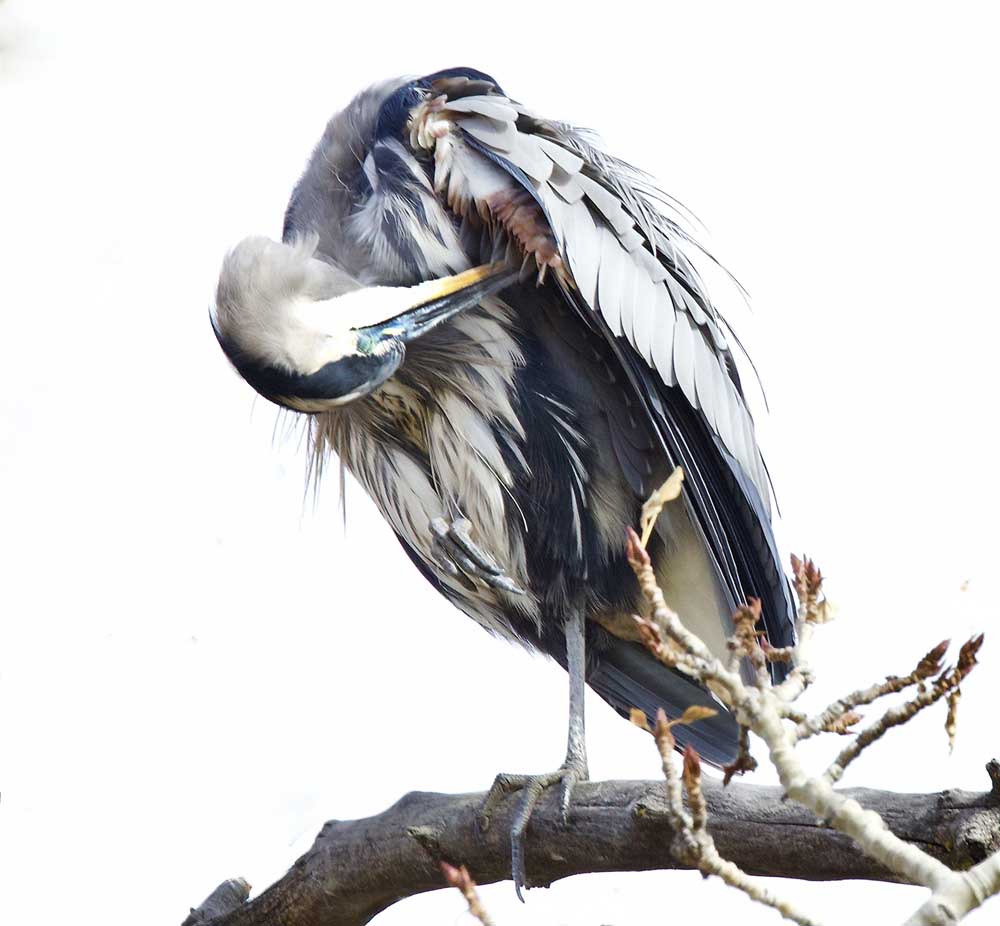Birding: Wading birds: Ours to enjoy!
Published 12:15 pm Monday, November 15, 2021

- A great blue heron preens while sitting high in a tree.
The heron family includes herons, bitterns and egrets. They are medium- to large-sized wading birds that are characterized by dagger-like bills that can quickly seize prey such as fish, frogs, aquatic insects and crustaceans. Their legs are long, and their necks are long and flexible and crooked as in an ‘S’ curve when the birds are in flight. In many species males and females also have wispy, long, plumes that grace their head, neck, and body during the breeding season.
Trending
The field checklist of birds for our area lists the American bittern, great blue heron, great egret and green heron as the most likely wading birds we see.
Great blue herons usually stick around on the Long Beach Peninsula. They disperse somewhat after the breeding season, but we see them all year round, especially on Willapa Bay feeding when the tide is out and often on the shoreline of the bay standing on logs or on a sturdy tree branch. Great blues nest in colonies typically called rookeries, where they build huge nests. Whenever I have seen one of them on the hunt, it was concentrating on the movement of its prey until it was ready to stab it with its dagger-like bill. I have also seen great blue herons hunting in the fields for small rodents on the peninsula and at Ridgefield. I was lucky enough to witness a great blue stab and snatch a rodent at Ridgefield in one of the fields near the end of the auto-drive.
The American bittern is a medium-sized wader. It sports brown and white vertical streaks on its underside which tends to match the pattern of the bulrushes and cattails where it lives. It is perfectly camouflaged. It even sways slowly from side to side when it needs to be in sync with the wind-blown vegetation (Lynch, 2021). Again, perfect camouflage! It also stretches its neck upward so it is thin just like a cattail. It takes a concentrated effort to see this bird.
Trending
The green heron is the smallest of the herons we usually see on the Peninsula. It is a colorful heron during the breeding season especially when it is dressed in a greenish black cap, rufous neck, greenish back adorned with long, flowing, black plumes, white chin, a creamy colored streak on its underside and bright orange legs.
The green heron tends to be secretive and often solitary in the dense wetlands it likes to hang out in. Here it feeds mainly on fish, but frogs, insects and spiders are often part of its daily diet. Its feeding behavior is most interesting. The green heron will lay items such as insects on the surface of the water to attract fish. When it is ready it will lunge forward and down with its whole body to spear its prey. I observed this behavior once.
One spring day after many visits to the Julia Butler Hansen refuge, I was standing on the observation deck when a green heron in breeding plumage flew in. I watched as it gathered itself together as it got ready for the hunt. While I couldn’t see exactly what the bird was placing on the surface of the water, I could see the activity which was followed by the lunge shortly afterwards. What a sight!
Last, but not least, is the great egret — a large-sized wading bird at three feet in height. Overall, it is about 10 inches smaller than the great blue heron. Its pure snowy white dress and size makes it easier to spot than other herons especially when it’s hunting for fish, amphibians or rodents in marshes or fields. It stalks its prey by moving slowly and periodically stopping in position. As soon as its meal appears, it stabs it with gusto. During the breeding season the great egret sports long white flowing plumes on its back. While it is considered occasional in our area it is becoming a bit more common these days. I have seen it along the shores of Willapa Bay and Black Lake. It is hard to miss this large, elegant heron. It is relatively common along I-5 on the way to Portland or the airport and it is sure to be seen at Ridgefield.
Herons are elegant and ours to enjoy. They are thrilling to see, and their behavior is a sight to behold. Moreover, we have a chance to see them in every season. Happy birding!









